These two fish are one of Florida’s most sought after species, and all of this starts around late March/early April and goes through late July. This is when they all gang up to have a “party” of sorts. In other words, this is when they move up in the pads and grass line to spawn.
Man, can you have a good time! This is the time to take a kid fishing if you want to see a pair of little eyes light up and a smile from ear to ear. You sure won’t be disappointed, I promise.
I had a chance to go and watch a master of the sport at work. This gentleman is 74 years young and, take it from me; he is the best at doing this kind of fishing that I have ever had the pleasure of being on the water with.
Charlie Bishop has lived at Grape Hammock Fish Camp on the south end of Lake Kissimmee for around 21 years. Now you won’t find him around the camp in the mornings because he gets out on the lake early so he won’t miss the Lord’s daily present.
He comes in around 10 am, when you will most likely find him and his best friend, his Beagle dog, riding throughout the park.
Now, back to fishing – Contrary to popular belief, Bluegill and Shellcracker are not in the Perch family.
Bluegill (Lepomis macrochirus), sometimes referred to as bream, brim, sunfish, or copper nose, is a member of the Centrarchidae family or, more commonly known, as the Sunfish family. It is native to a wide area of North America, all the way from Quebec, Canada to northern Mexico. It is even the state fish of Illinois. They are a round shaped fish that is highly variable in color, ranging from dark blue or almost purple to yellow, with six to eight vertical bars on the sides and a red to orange belly. The Bluegill's most notable feature is the broad, round black "ear" which is actually an extension of the gill. Its name, however, comes from the bright blue edging visible on its gill rakers. The colors are very vivid in the males when they are spawning. World record is 4 pounds, 12 ounces and was caught in 1950. Most will run from six to eight inches long as adults and weigh anywhere from 1/4 to 1 pound.
When the water is over 65 degrees on the full moon Bluegill will spawn. They will spawn every full moon from early spring and all the way through summer in most southern states. They are attracted to light and will come to lights on docks at night to feed on insects that are attracted by the light. Some Bluegill will grow to a maximum size of nearly 5 pounds, and a maximum overall length of approximately 16 inches.
They are mean and testy. Bluegill will eat anything they can get in their mouth, including insects, worms, small minnows and crayfish. They can be caught on all kinds of live bait including crickets, earthworms, meal worms, freshwater shrimp and small minnows. Artificial bait that is good for Bluegill includes small spinners and jigs as well as all kinds of dry and wet flies. When Charlie goes looking for these fish, he will ride around and look for the lily pads to be shaking or bumping. But you can also smell them. Once he finds this kind of area, he puts a cricket on and starts fishing.
The kind of equipment to use – Charlie likes to use a 14 foot cane pole with 20 lb Berkley Big Game, a #6 long shank Mustad hook, a slip float, and a #4 pinch-on sinker. Before you put anything on your line, you put a bobber stop, which you can slide up and down the line. So, if you are fishing in let’s say 4 feet of water and you want your bait 1 foot off the bottom, you slide the bobber stop to 3-3 ½ feet. Once you find the right depth, you set the bait in around the pads and you drop the rod tip towards the water. The weight will pull the line through the slip float and this will make the float stand straight up. If the float lays flat then you just pull your bobber stop down the line until the float stands upright. Then you know you are off the bottom, which is the key because the cricket will be able to move around on the hook. When the float moves just a little, set the hook and hold on.
Shellcracker (Lepomis microlophus), are actually redear sunfish, but are also known as Georgia bream, cherry gill, chinquapin, improved bream, stumpknocker, and sun perch. Therefore, they are in the same Sunfish family as the Bluegill. Shellcracker are native to the southeastern United States, but because of its popularity, it has been introduced to waters all over North America.
It generally resembles the Bluegill except for coloration and somewhat larger size. The back of a Shellcracker is light green to brown with scattered darker spots. The light gray to silver sides have 34 to 43 lateral line scales. Lower surfaces of the head and belly are light yellow to white. Sides of the head are mottled with brown to dark orange spots. The dorsal fin is light gray with nine to 11 spines and 10 to 12 rays. The light yellow to white anal fin has three spines and 12 to 14 rays. The pectoral fin has 13 or 14 rays and it is long and pointed, its end reaching past the nostril when bent forward. The world record is 5 pounds, 7 ounces, but most will run from 8 to 11 inches long as adults and weigh from about 3/4 to 2 pounds.
During spawning, males congregate and create nests close together in colonies, and females visit to lay eggs. Each Shellcracker will usually only lay once each spring, although they sometimes socialize with other sunfish species. They may come to lights on docks at night to feed on insects but not as much as their cousins, the Bluegill and Crappie. Shellcracker generally tend to feed best during the day. The favorite food of this species is freshwater mussels, snails, worms, shrimp, insects and grubs. These fish are bottom feeders, meandering along lakebeds seeking and cracking open snails and other shelled creatures, hence the common name of “shellcracker”. Shellcracker are fished differently than Bluegill. Instead of crickets, you use wigglers (worms) and they are fished on the bottom. It is very important that this bait lies on the bottom right in their nest.
Now let’s talk a little about equipment. Charlie likes the cane pole, but there are poles, referred to as “extension poles”, that extend in and out, ranging from an extended length of 8 feet to 20 feet. There are numerous brands, such as Wonderpole, B & M, etc and some even come with guides, for those who prefer to use a small reel. These are available at most local tackle stores and online. These poles are good for a lot of people because they can be carried in the trunk of a car. Everything else is rigged the same as for Bluegill fishing.
Let’s take time out from fishing to give you some tips –
Hook Holders
Many spinning/baitcast rods come without a hook holder to put your hook through. You never want to put your hook through one of the guides because you could damage it. So, take a number 47-60 “O” ring and, using a tie wrap, wrap it around the rod a few inches above the handle. That will last for a long time. You can also use an “O” ring on the handle of a cane or extension pole to loop your hook under when stowed away.
Tongue Protector
This tip is for you guys and gals who don’t have a garage to keep your boat in. Go to one of the hardware stores and buy a piece of round drain pipe, the flexible kind. Cut a slit in the bottom so that your tongue wheel will slide past. This will protect your tongue from the weather.
Rod Cozies
Take a one gallon baggy and cut out one corner at the bottom. Slide your rod handle through the cut out corner and then, once you pull the handle through, slide it over the reel and zip it up. Then you can hang it up with your other rods in your garage. This will keep your reels clean until you are ready to use them again.
Keep what you can eat and release the rest for the next time. Remember, the daily bag limit is 50 panfish, which includes bluegill, shellcracker, flier, longear sunfish, mud sunfish, shadow bass, spotted sunfish (stumpknockers), warmouth and redbreast sunfish, individually or in total; and the possession limit is two days’ bag limit.
Thursday, October 07, 2010
Subscribe to:
Post Comments (Atom)











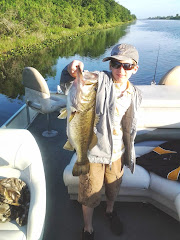
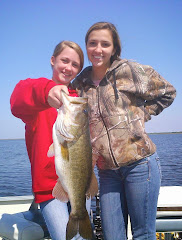
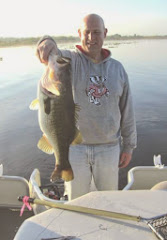

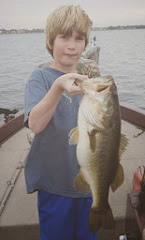

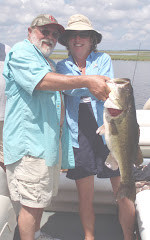
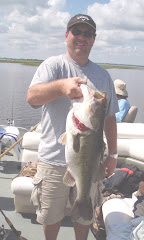
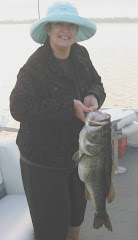
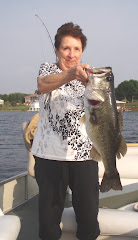
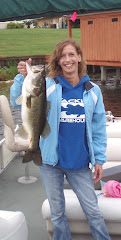
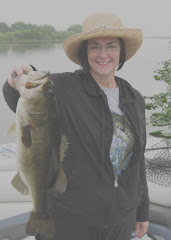
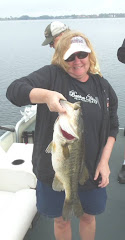
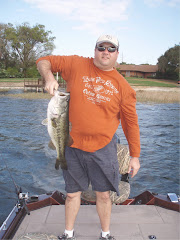
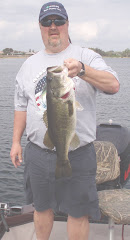
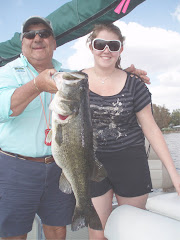

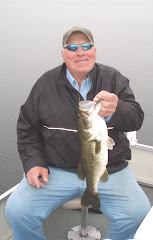

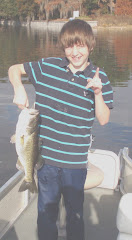
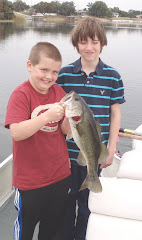















No comments:
Post a Comment